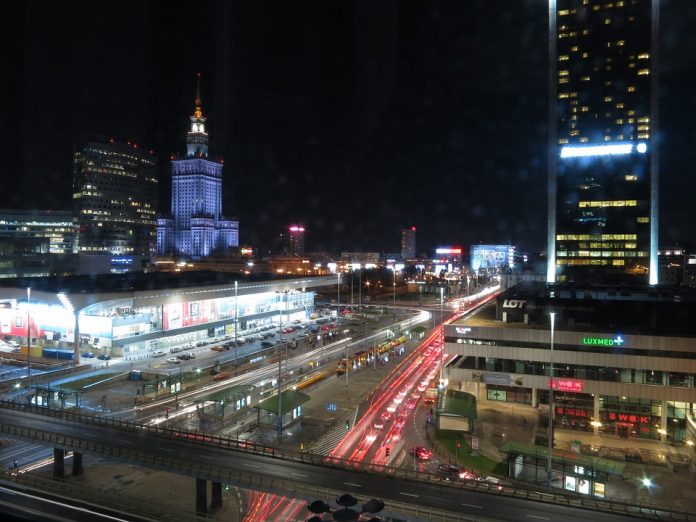One of the most exciting aspects of the Internet of Things (IoT) is that we’re slowly but surely moving toward a world where our major cities become “smart.” Not unlike a smart home, this means that innumerable aspects of a city’s functionality will become interconnected through sensors and other technologies. Designed to gather data and improve the area for residents and visitors alike, these technologies will make a city come alive.
In a way, it begins with streetlights. As one article put it, the vision of a smart city decked out with millions of sensors gathering useful information is almost out of science fiction. But some cities looking to implement IoT technologies for “smart” purposes have determined that the foundation for those sensors is already in place. In these instances, companies are using existing streetlights as nodes that can be equipped with all kinds of connected equipment. A modern, “smart” streetlight might also facilitate city-wide wireless internet. It could also have a small camera that can monitor surroundings or it might even be outfitted with equipment that tracks air quality and weather changes. Each of these functions contributes in multiple ways to the transformation of a modern city.
In addition to streetlights, vehicles are also helping smart cities to rapidly progress. Modern GPS and telematics are also turning cars into mobile “nodes” that can work with other technologies for the purpose of gathering data and improving city functionality. Described as the integration of computers and mobile telecommunications technologies, telematics help vehicles to reach out to their surrounding environments. This will mean that public transportation within cities becomes fully automated in the near future, making it easier, quicker, and more energy efficient for people to get around. Even now, connected vehicles can be used to produce information on everything from traffic density to where there are open parking spots.
These two example–streetlights and connected vehicles–should begin to provide an idea of the kind of activity that’s helping to facilitate the growth of smart cities. And as this piece providing an overview of smart cities explained, companies and city developers have begun pouring investments into the smart city concept, working on finding new and innovative ways to gather data and facilitate efficiency.
With all this said it’s still difficult to comprehensively summarize the effect that this is all having. Streetlights are helping to conserve energy by dimming or even turning off if their internal sensors detect that no one is around. They’re also providing wireless internet outside or on the streets. In a behind-the-scenes way, they’re gathering data about crowd density and pedestrian activity that can be used by planners and developers to change the city itself. That could mean designing a walking plaza if there’s an area with high pedestrian traffic and not enough space. Meanwhile, connected and autonomous cars can provide real-time information about traffic and more.
These are just a few examples, but they should help to paint the beginnings of the broader picture of smart city development. In the coming years, we’ll begin to see cities working for us to make our days smoother and more efficient. Some of it will be automatic as we access the internet wherever and whenever we want and find information that can help us navigate and manage our time better. And some of it will be different in that we could see the rise of kiosk-like data centers within cities, where information from sensors and technologies can be gathered and put to use with various updates. Whatever the specific development, the label “smart” is starting to make more sense when it comes to where and how we live.
Blaine Kelton is a budding writer, with interest in technology, among other subjects, and is based in California.


